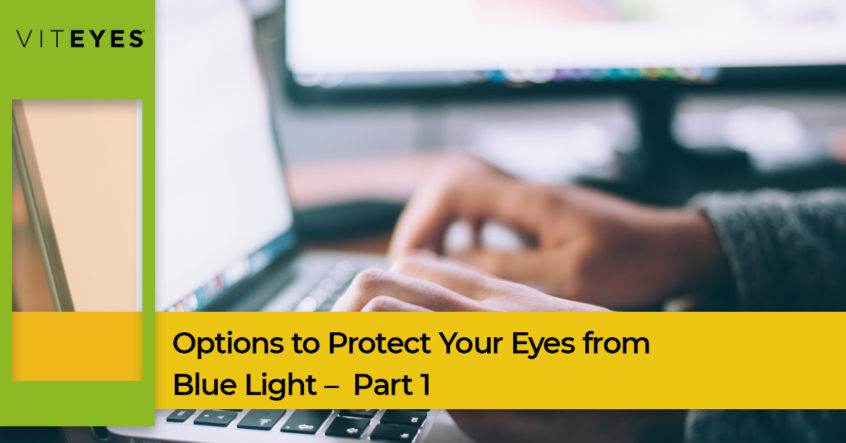Over the last decade, there has been a lot of focus on blue light and the damage that blue light exposure can cause to the eyes. Research has taught us a lot about the entire spectrum of light and about our eyes in general. In today’s post, we are going to take a closer look at what blue light is, the concern about it, and how to prevent eye damage.
At Viteyes®, we have dedicated our brand to support optimal eye health for people of all ages. One of the most important things we do is educate the public about their eye health, vision, and all the things that affect eye nutrition. Our Viteyes Blue Light Defender Plus vitamins support eye health and help eyes stand the test of blue light.
What You Need to Know About Blue Light
Blue light is a spectrum of light that is found in many settings including natural sunlight and artificial screen light. While all blue light has the potential to cause retinal damage over time, it serves an important purpose in guiding natural circadian rhythms. In small amounts or at regular intervals, blue light exposure does not cause much concern and can support a healthy sleep-wake cycle and optimal mental health.
One study suggests that blue light exposure and long-term circadian rhythm disruption while another study suggested that prolonged blue light exposure may increase the risk of insulin-dependent diabetes. Mood disorders, including depression and insomnia, have been correlated to blue light exposure. Degenerative eye diseases including macular degeneration and retinal damage and blindness have also been directly correlated to overexposure to artificial blue light. Screen glare and the contrast caused by the difference between natural and artificial light has the potential to have a significant negative impact on your overall health and vision. So, what can you do about it?

How to Prevent Blue Light Damage
There are several things you can do to help reduce blue light damage and protect your eyes. Remember that natural sunlight is also a source of blue light and sunglasses are more than just a fashion statement. Sunglasses should be worn in high-sun exposure, especially while driving, on the water, or on the snow. In this section, we will focus more on how to help prevent blue light damage from artificial sources.
Reduce screen time.
The average American adult spends more than three hours on handheld devices including smartphones and tablets each day. Additionally, the average American’s computer time has increased from less than four hours a day to more than nine hours a day due to the increased reliance on technology in the workforce. These numbers, while staggering, do not include the time the typical family spends watching television, which has also risen dramatically over the last few decades. The single best way to help protect your eyes from blue light exposure from screens is to reduce the time you spend looking at a screen.
If you look at a screen for a living, you may not be able to reduce the amount of time you look at a screen, but there are ways to reduce the harm this screen time may cause. Join us in part two of this three-part series on protecting your eyes from harmful blue light exposure.
